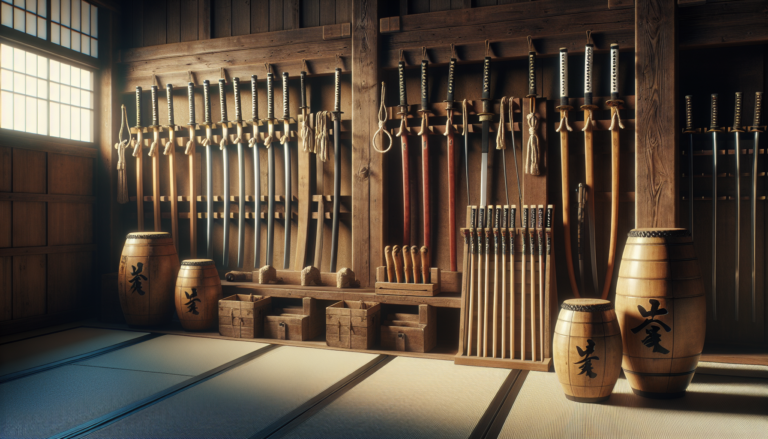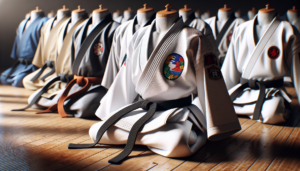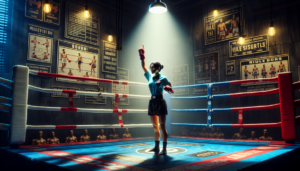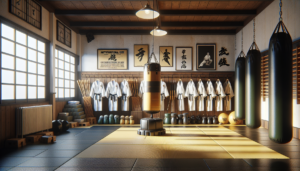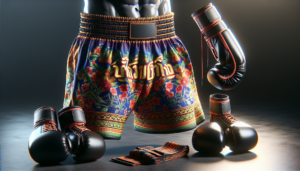Introduction to Weapon Martial Arts
Weapon martial arts, also known as armed martial arts, are a fascinating subset of traditional martial arts that focus on the use of weapons in combat and self-defense. These disciplines have evolved over centuries, with each style developing unique techniques, training methods, and philosophical approaches. From the graceful movements of Japanese sword arts to the dynamic strikes of Filipino stick fighting, weapon martial arts offer practitioners a chance to connect with ancient traditions while developing physical skill, mental discipline, and cultural understanding.
What are Weapon Martial Arts?
Weapon martial arts encompass a wide range of styles that utilize traditional martial arts weapons in their training and techniques. These weapons can include swords, staffs, sticks, knives, spears, and many others, depending on the cultural origin and focus of the specific style. Many practitioners study weapon arts in conjunction with unarmed techniques, viewing them as complementary aspects of a complete martial arts education. Weapons training can enhance attributes like coordination, timing, distancing, and situational awareness that are equally applicable to empty-hand combat.
Some of the most well-known weapon martial arts include Kendo and Iaido from Japan, which focus on sword techniques; Bojutsu, the art of the staff; and Kobudo, which trains practitioners in the use of Okinawan farm implements adapted as weapons. Eskrima, also known as Kali or Arnis, is a Filipino martial art known for its dynamic stick and knife techniques. Other notable weapon styles include Gatka, an Indian sword art; Canne de Combat, a French cane-fighting system; and the rapidly growing field of Historical European Martial Arts (HEMA), which reconstructs sword fighting techniques from medieval and renaissance-era combat manuals.
History and Evolution
The history of weapon martial arts is closely tied to the evolution of combat, culture, and spirituality in various societies around the world. In many cases, the techniques and principles that formed the basis of these arts were originally developed for use on the battlefield. As warfare evolved and the nature of conflicts changed, the emphasis shifted towards civilian self-defense, dueling, and eventually the preservation of cultural heritage.
In Japan, for example, the samurai class developed a range of martial arts that reflected their role as professional warriors in feudal society. These included styles of swordsmanship, archery, spearfighting, and later the use of firearms. As the samurai faded into history, many of their martial arts transitioned into the modern era as methods of self-cultivation and spiritual development. Kendo, Iaido, Kyudo, and other arts continue to be practiced today, preserving the principles and philosophies of the samurai.
Similarly, Filipino martial arts like Eskrima and Kali trace their lineage back to the pre-colonial era, where tribal warriors used swords, spears, and sticks to defend against invaders and rival clans. As colonizers suppressed the practice of indigenous martial arts, many systems were preserved through folk dances and sports, disguising their combative nature. Today, Filipino martial arts are prized for their practicality, adaptability, and emphasis on improvised weapons.
The evolution of weapon martial arts reflects the changing needs and values of the societies that created them. As the role of martial arts has shifted from battlefield combat to personal development, many styles have adapted their training methods and philosophies accordingly. However, the core principles of discipline, respect, and the cultivation of mind and body remain central to the practice of weapon martial arts.
Popular Weapon-Based Martial Arts Styles
Kendo: The Way of the Sword
Kendo, meaning “the way of the sword,” is a modern Japanese martial art that descended from the samurai tradition of swordsmanship. Practitioners use bamboo swords called shinai and protective armor (bogu) to engage in sparring matches, with points scored for precise strikes to the head, wrist, or body. Kendo training emphasizes proper form, etiquette, and the development of a strong spirit. Matches are intense and fast-paced, requiring a combination of physical skill, mental focus, and strategic thinking.
Kendo is widely practiced in Japan and has gained popularity around the world. It is often taught in conjunction with Iaido, the art of drawing and cutting with a real sword. While Iaido focuses on solo forms and precise techniques, Kendo offers the opportunity to test one’s skills against an opponent. Kendo practitioners, known as kendoka, often speak of the art as a means of self-improvement and character development, reflecting the influence of Zen philosophy on Japanese martial arts.
Bojutsu: Mastering the Bo Staff
Bojutsu is the martial art of the Bo, a six-foot staff that is one of the most widely used weapons in traditional Japanese and Okinawan martial arts. The Bo is a versatile weapon that can be used for striking, thrusting, blocking, and even throwing techniques. Bojutsu training typically involves learning a series of solo forms (kata) that teach the fundamental techniques and principles of the art. These forms are often performed with a partner to develop timing, distance, and responsiveness.
In addition to its practical applications, Bojutsu is valued for its role in developing physical attributes like strength, endurance, and coordination. The length of the Bo requires practitioners to maintain a strong stance and engage the entire body in each movement. Many Bojutsu techniques involve circular motions that generate power through the hips and core, reflecting principles common to unarmed martial arts like Karate and Aikido.
Bojutsu is often incorporated into the curriculum of styles like Kobudo, which focuses on the use of Okinawan farm tools as weapons. It is also practiced as a standalone art, with several schools dedicated exclusively to the study of the Bo. As with other traditional martial arts, Bojutsu places a strong emphasis on discipline, etiquette, and respect for one’s training partners and instructor.
Eskrima: Filipino Stick Fighting
Eskrima, also known as Kali or Arnis, is a Filipino martial art that emphasizes the use of sticks and bladed weapons. It is known for its fast-paced, fluid style of fighting that incorporates strikes, thrusts, blocks, and disarms. Eskrima practitioners typically train with rattan sticks ranging from 18 to 28 inches in length, simulating the use of swords, knives, and improvised weapons.
One of the defining features of Eskrima is its emphasis on practicality and adaptability. Techniques are designed to be effective in real-world self-defense situations, with a focus on neutralizing an attacker quickly and efficiently. Training often involves sparring with minimal protective gear, allowing practitioners to develop a sense of distance, timing, and the ability to perform under pressure.
Eskrima also incorporates empty-hand techniques, grappling, and weapons disarms, reflecting its origins as a comprehensive fighting system. Many Eskrima drills are designed to develop ambidexterity, with practitioners learning to wield weapons in both hands with equal proficiency. This allows for a fluid and unpredictable fighting style that can adapt to changing circumstances.
In recent years, Eskrima has gained popularity around the world, particularly among military and law enforcement personnel who value its practical approach to self-defense. It has also been featured in numerous films and television shows, showcasing the dynamic and visually impressive nature of the art. Despite its growing global presence, Eskrima remains deeply rooted in Filipino culture and is often taught in conjunction with the country’s native language and values.
Iaido: The Art of Sword Drawing
Iaido is a Japanese martial art that focuses on the smooth, controlled movements of drawing the sword from its scabbard, striking or cutting an opponent, removing blood from the blade, and then replacing the sword in the scabbard. While Iaido is often practiced as a standalone art, it is closely related to Kendo and other styles of Japanese swordsmanship.
Iaido practitioners train with a blunt-edged sword called an iaito, which allows them to safely practice techniques that would be dangerous with a sharp blade. Training typically involves learning a series of solo forms (kata) that teach the fundamental techniques and principles of the art. Each kata begins and ends with the sword sheathed, emphasizing the importance of the draw and the return of the blade to the scabbard.
In addition to the physical techniques of drawing and cutting with the sword, Iaido places a strong emphasis on mental discipline and self-awareness. Practitioners learn to maintain a state of calm alertness, ready to respond to an attack at any moment. This mental focus is reflected in the precise, controlled movements of the art, which require a high degree of concentration and self-control.
Iaido is often practiced as a form of moving meditation, with practitioners striving to achieve a state of mindfulness and presence in the moment. This emphasis on mental and spiritual development reflects the influence of Zen Buddhism on Japanese martial arts. Many Iaido practitioners view the art as a means of self-cultivation and personal growth, rather than simply a method of self-defense.
Kobudo: Okinawan Weapons Arts
Kobudo is a term that refers to the traditional weapons arts of Okinawa, the birthplace of Karate. These arts developed in the 17th century, when the Okinawan kingdom was invaded and occupied by the Japanese, who banned the possession of weapons. In response, the Okinawans developed fighting techniques using everyday farm implements like the Bo (staff), Sai (truncheon), Tonfa (handled club), and Nunchaku (flail).
Kobudo training typically involves learning a series of solo and partner forms (kata) that teach the fundamental techniques and principles of each weapon. These forms are often performed in conjunction with Karate kata, reflecting the close relationship between the two arts. Many Karate schools incorporate Kobudo training into their curriculum, viewing it as an essential part of a well-rounded martial arts education.
In addition to its practical applications, Kobudo is valued for its role in preserving Okinawan cultural heritage. Each weapon has its own history and symbolism, reflecting the island’s unique blend of Chinese, Japanese, and indigenous influences. For example, the Sai was originally used as a tool for planting rice, while the Tonfa was used to grind grain. By studying these weapons and their associated techniques, practitioners gain insight into the daily lives and struggles of their Okinawan ancestors.
Kobudo is practiced around the world, both as a standalone art and as a complement to Karate and other martial arts. Its emphasis on practical, efficient techniques and the use of everyday objects as weapons has made it popular among self-defense enthusiasts and those interested in traditional martial arts. As with other Okinawan arts, Kobudo places a strong emphasis on discipline, respect, and the development of character through martial arts training.
Training and Techniques in Weapon Martial Arts
Essential Training Aids and Equipment
Training in weapon martial arts requires specialized equipment and aids to ensure safety and effectiveness. The specific equipment needed varies depending on the style and the weapons used, but some common items include:
– Protective gear: This may include helmets, gloves, body armor, and shin guards to prevent injuries during sparring and partner drills. Kendo, for example, requires a full set of armor called bogu, while Eskrima practitioners often use minimal gear to simulate real-world conditions.
– Training weapons: Most styles use modified versions of traditional weapons for safe practice. These may be made of wood, bamboo, foam, or plastic, depending on the level of contact involved. Bokken (wooden swords) and shinai (bamboo swords) are common in Japanese arts, while rattan sticks are used in Eskrima and Bojutsu.
– Targets and striking pads: These allow practitioners to develop power, accuracy, and proper body mechanics when striking with weapons. They range from simple wooden posts to high-tech electronic targets that provide feedback on strike location and timing.
In addition to physical equipment, many weapon arts place a strong emphasis on mental training aids like visualization, meditation, and breathing exercises. These practices help develop focus, calmness under pressure, and a connection between mind and body that is essential for effective technique.
Sparring and Practical Application
Sparring, or free-form fighting with a partner, is a crucial aspect of training in most weapon martial arts. It allows practitioners to test their techniques against a resisting opponent and develop the timing, distance, and strategic thinking needed for real-world application. The level of contact and protective gear used in sparring varies by style and school, ranging from light touch with padded weapons to full-contact with minimal protection.
In addition to sparring, many weapon arts use partner drills and pre-arranged sequences to teach specific techniques and principles. These drills often involve a series of attacks and defenses performed at increasing speed and intensity, allowing practitioners to develop muscle memory and reflexive responses. Some drills may also incorporate multiple attackers, weapons disarms, or environmental obstacles to simulate real-world scenarios.
To bridge the gap between solo forms and free-sparring, some styles use a practice called “limited sparring” or “semi-sparring.” This involves sparring with specific rules or limitations, such as only being allowed to attack certain targets or use certain techniques. This allows practitioners to focus on developing specific skills or strategies in a more controlled environment.
Ultimately, the goal of sparring and practical application in weapon martial arts is to develop the ability to apply techniques effectively in real-world situations. This requires not only physical skill, but also mental clarity, situational awareness, and the ability to adapt to changing circumstances. By training with a variety of partners and scenarios, practitioners can develop the confidence and competence needed to handle real-world threats.
Physical Fitness and Conditioning
While technique and skill are essential in weapon martial arts, physical fitness and conditioning play a crucial role in both performance and long-term practice. The specific physical demands vary by style, but most require a combination of strength, endurance, flexibility, and coordination. Swinging a heavy weapon like a sword or staff for extended periods can quickly fatigue the arms and shoulders, while maintaining stable stances and quick footwork requires leg strength and balance.
To meet these demands, many weapon arts incorporate supplemental training like weightlifting, cardiovascular exercise, and stretching into their curricula. Some styles, like Kendo, place a strong emphasis on leg strength and stability, with practitioners performing hundreds of squats and footwork drills in each session. Others, like Eskrima, focus on developing grip strength and forearm endurance to wield sticks and blades effectively.
In addition to physical benefits, regular conditioning can also have mental and emotional benefits for martial artists. The discipline and perseverance required to push through physical discomfort can translate into increased mental toughness and resilience. Many practitioners also report reduced stress, improved mood, and increased self-confidence as a result of their training.
Ultimately, physical fitness and conditioning are essential for anyone serious about long-term practice in weapon martial arts. By developing a strong foundation of physical health and ability, practitioners can enhance their technique, reduce the risk of injury, and enjoy their training well into old age.
Finding the Right Teacher and School
Qualities of a Good Martial Arts Teacher
Finding a qualified and experienced teacher is crucial for anyone interested in studying weapon martial arts. A good teacher not only has technical expertise in their style, but also the ability to communicate effectively, provide individualized feedback, and create a safe and supportive learning environment. Some key qualities to look for in a martial arts teacher include:
– Lineage and credentials: Look for a teacher who has trained extensively under reputable instructors and holds recognized ranks or certifications in their style. While not always a guarantee of quality, a strong lineage suggests that the teacher has been vetted by their peers and has a deep understanding of the art.
– Teaching experience: An experienced teacher will have a proven track record of helping students achieve their goals and navigate the challenges of training. They should be able to adapt their teaching style to different learning needs and provide clear, constructive feedback.
– Emphasis on safety: Weapon training carries inherent risks, and a good teacher will prioritize safety at all times. They should teach proper techniques for handling weapons, enforce safety protocols during sparring and drills, and foster a culture of respect and control among students.
– Personal qualities: A good teacher leads by example, embodying the values and principles of their art both in and out of the training hall. They should be patient, compassionate, and committed to the growth and well-being of their students.
Choosing the Right Martial Arts School
In addition to finding a qualified teacher, it’s important to choose a martial arts school that aligns with your goals and values. Some factors to consider when evaluating a school include:
– Curriculum and philosophy: Different schools may emphasize different aspects of training, such as self-defense, competition, or personal development. Make sure the school’s approach aligns with your reasons for training and that the curriculum covers the skills and techniques you want to learn.
– Training environment: Observe a class or two to get a sense of the school’s culture and atmosphere. Look for a supportive and inclusive environment where students are encouraged to ask questions, give feedback, and help each other learn.
– Class schedule and location: Make sure the school offers classes at times and locations that are convenient for you. Consistency is key to making progress in martial arts, so choose a school that you can realistically attend on a regular basis.
– Reputation and community: Do some research on the school’s reputation within the local martial arts community. Look for reviews from current and former students, and consider reaching out to other schools or organizations for their opinion. A reputable school will have a track record of producing skilled and respectful practitioners.
Ultimately, the right teacher and school will depend on your individual needs and goals as a martial artist. By taking the time to research your options and asking plenty of questions, you can find a training environment that supports your growth and helps you achieve your full potential in weapon martial arts.
Conclusion
The Benefits of Weapon Martial Arts
Training in weapon martial arts offers a wide range of benefits for practitioners of all ages and backgrounds. Some of the most significant include:
– Improved physical fitness: Swinging weapons and performing dynamic footwork can provide a full-body workout, improving strength, endurance, and coordination.
– Enhanced mental discipline: The focus and precision required to wield weapons safely and effectively can help develop concentration, patience, and emotional control.
– Increased self-confidence: Mastering complex techniques and overcoming physical and mental challenges can boost self-esteem and resilience.
– Cultural understanding: Many weapon arts are deeply rooted in the history and traditions of their countries of origin. Studying these arts can provide insight into different cultures and ways of life.
– Self-defense skills: While the primary goal of most weapon arts today is personal development, the techniques learned can also be applied in real-world self-defense situations.
In addition to these individual benefits, training in weapon martial arts can also foster a sense of community and belonging. Sharing the challenges and triumphs of training with fellow students can create lifelong bonds and support networks.
Getting Started on Your Journey
If you’re interested in exploring the world of weapon martial arts, there are a few key steps you can take to get started:
1. Research styles and schools: Take some time to learn about the different weapon arts and their histories, philosophies, and training methods. Attend local events or seminars, read books and articles, and watch videos to get a sense of what appeals to you.
2. Visit local schools: Once you’ve identified some styles or schools that interest you, schedule a visit to observe a class or meet with an instructor. Ask questions about their curriculum, teaching approach, and student outcomes.
3. Start with the basics: Many weapon arts require a foundation in basic techniques and principles before progressing to more advanced training. Be patient and focus on mastering the fundamentals, even if they seem simple or repetitive at first.
4. Embrace the challenge: Learning a weapon art can be physically and mentally demanding, especially in the beginning. Embrace the challenge as an opportunity for growth and development, and don’t be afraid to ask for help or guidance when needed.
5. Stay committed: Consistency is key to making progress in any martial art. Set realistic goals for your training and make a commitment to attend classes regularly and practice between sessions.
Remember, the journey of a thousand miles begins with a single step. By taking action and staying committed to your training, you can unlock the many benefits of weapon martial arts and discover a lifelong path of personal growth and development.
#ED#

